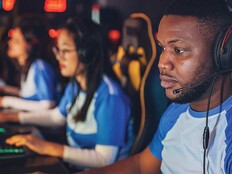Did the Computer Science Gender Gap Begin in 1984?
In the early 1980s, the computer science industry was amassing a huge workforce of men and women to support the burgeoning market. But in 1984, the number of women studying the subject in college plummeted.
NPR's Planet Money reported that the turning point in 1984 occurred at nearly the same moment at which marketing for PCs began ramping up. The NPR blog stops short of concluding there was a causal relationship between these events, instead qualifying the finding as "a good starting place."
The earliest PCs weren't capable of much more than video gaming and some light word processing, and several large marketing campaigns for them targeted males. This eventually became a cultural phenomenon fueled by popular movies, forming the basis of tech culture.
"This idea that computers are for boys became a narrative. It became the story we told ourselves about the computing revolution. It helped define who geeks were, and it created techie culture," writes NPR technology correspondent Steve Henn.
EdTech addressed the computer science gender gap in an article in August, after Education Week reported that less than 20 percent of the students who took the Advanced Placement computer science exam in 2013 were female.
At the time, Rane Johnson-Stempson, the principal research director at Microsoft Research, said she believes the problem can be traced back to families' computer purchasing decisions in the 1980s and ’90s.
“At younger ages, boys are encouraged to be on the computer, to play computer games, to explore online. In the 1980s and ’90s, many families put computers in the boy’s bedroom but not the girl’s,” she said.
Regardless of the reason for the gender gap, many tech companies have been trying to turn the tide recently. Google and Microsoft have both launched outreach programs to encourage women to pursue careers in computer programming.
Google is helping to fund Made with Code, an initiative designed to interest more middle and high school girls in learning to code. The company said it would dedicate $50 million over the next three years to the initiative, “along with key partners such as Girl Scouts of the USA and Girls Inc.,” according to CNET.
Microsoft has a similar approach through its Big Dream Movement, created to attract more women to careers in science, technology, engineering and mathematics. Named after a documentary that chronicles the lives of seven women seeking to pursue STEM careers, the initiative aims to connect girls with organizations, academia and resources to help them on their journeys.









